Possibly the most exciting new product released at the 2018 NRA show is a system called BDX from SIG SAUER. It links rangefinder, smart phone, and riflescope to instantly provide ballistic holdovers inside of the scope. Right there on the reticle, an LED illuminates to mark the correct holdover for the distance, angle, and weather conditions identified by the rangefinder and crunched through Applied Ballistics on your phone. It’s awesome, and complete packages start as low as $699 . . .
Ranged not at this pillar but at something farther away, the rangefinder fed the distance to the phone, which crunched the data, which fed the hold to the scope, which illuminated a dot at the correct point down the reticle. Hold there to hit your target at that range — it’ll even light up for wind holds. All of this happens almost instantly.
BDX will be available across many of SIG’s rangfinders and a line of scopes spanning the features and price spectrum.
SIG’s official press release follows . . .
SIG SAUER® Electro-Optics Transforms Hunting with the launch of BDX™
NEWINGTON, N.H., (May 4, 2018) – The SIG SAUER Electro-Optics division today unveiled their all new Ballistic Data Xchange (BDX) rangefinders and riflescopes with integrated Applied Ballistics® and wireless Bluetooth® technology. This groundbreaking BDX technology enables interoperability and key ballistic holdover information to be exchanged wirelessly between SIG SAUER BDX Electro-Optics products. The foundation of the BDX system was designed for simplicity and ease of use. SIG SAUER BDX requires no new learning, and uses the same tools hunters and shooters have been using for years.
How does BDX work? The BDX rangefinder and riflescope system is simple, fast, and intuitive. Simply download the “SIG BDX” app available for Android or iOS smartphones, pair the KILO BDX rangefinder and SIERRA3BDX riflescope, set up a basic ballistic profile, and then you’re ready to shoot or hunt. Once you are in the field, range your target as you normally would, and the KILO BDX rangefinder will utilize onboard Applied Ballistics Ultralight™ to instantly send your dope to the scope via Bluetooth. Using your basic ballistic profile the ballistic solution is calculated for your target and will instantly illuminate on the BDX-R1 Digital Ballistic Reticle with windage and elevation holds in the SIERRA3BDX riflescope. A blue LED on the riflescope power selector indicates that the BDX system is paired, and when the reticle has received new ballistic holdover and windage data from the rangefinder.
“Rangefinding riflescopes of the past have had two major shortcomings: they are either big, boxy and heavy, or extremely expensive,” said Andy York, president, SIG SAUER Electro-Optics. “The revolutionary and affordable BDX system packs advanced ballistics technology into a simple platform that looks just like the rangefinder and riflescope that every hunter is using today. It is extremely simple to use; range a target, put the digital ballistic holdover dot on target, pull the trigger, impact. Incredibly accurate and extremely simple, just connect the dot.”
The BDX family of rangefinders includes: KILO1400BDX, KILO1800BDX, KILO2200BDX, KILO2400BDX, and KILO3000BDX rangefinder binocular. These rangefinders include many of the legacy features that the KILO name was built on: Lightwave DSP™ digital rangefinder engine, Hyperscan™ with 4 times per second scan rate, RangeLock™, and the Lumatic™ auto-adjusting display.
Available in 3.5-10x42mm, 4.5-14x44mm, 4.5-14x50mm, and 6.5-20x52mm, the SIERRA3BDX riflescopes have the look, feel, weight, and size of traditional riflescopes. They feature HD glass for superior resolution and optical clarity, 30mm main tubes, side-focus parallax adjustments, and the LevelPlex™ digital anti-cant system. The BDX-R1 Digital Ballistic Reticle is the evolution of holdover, providing a ballistic solution out to 800 yards with 1 MOA of accuracy.
Rounding out these superior features is SIG SAUER’s kinetic energy transfer indicator: KinETHIC™. KinETHIC provides assistance in assuring an ethical hunt by indicating when energy on target drops below a threshold that can be set by the hunter using the BDX App.
“Ethics in hunting are a contract we make with ourselves based on the standards we as sportsmen adhere to as a group, what we feel good about personally, and respect for the game and our hunting traditions,” said Andy York president, SIG SAUER Electro-Optics. “KinETHIC is a feature that asks the hunter to make an educated and ethical decision beforehand by taking into consideration what the velocity and energy capabilities of your bullet and load are to deliver a killing shot. It then lets you know if the shot you are about to take will fulfill this contract. If not, it provides a visual affirmation to stalk-in closer. Knowing your maximum effective hunting range is more than just knowing what you can hit.”
KILO BDX Rangefinders starting at $299.99 MSRP
SIERRA3BDX Riflescopes starting at $599.99 MSRP
Available at dealers July, 2018.All SIG SAUER Electro-Optics are covered by the SIG SAUER INFINITE GUARANTEE™, and electronic components under our LIMITED 5-YEAR warranty. Please see sigsauer.com for full details.
Get Social: follow SIG SAUER on Facebook, Twitter, Instagram, and YouTube for the latest news, product announcements, events, and updates.


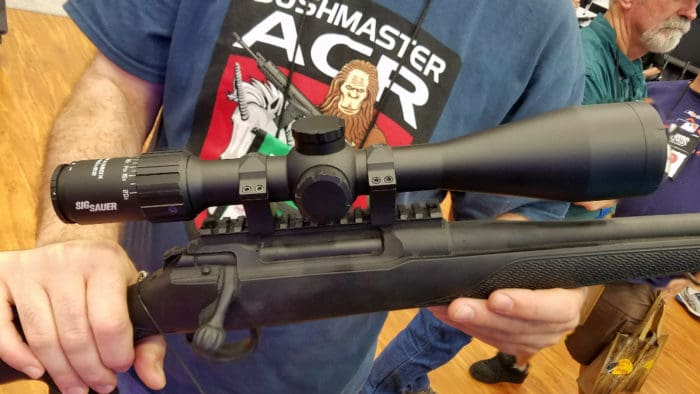
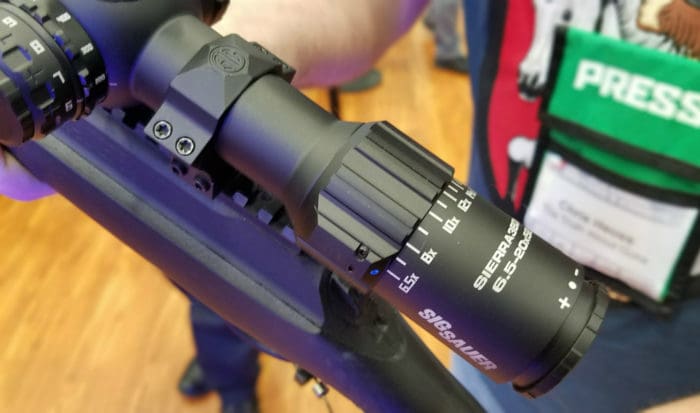
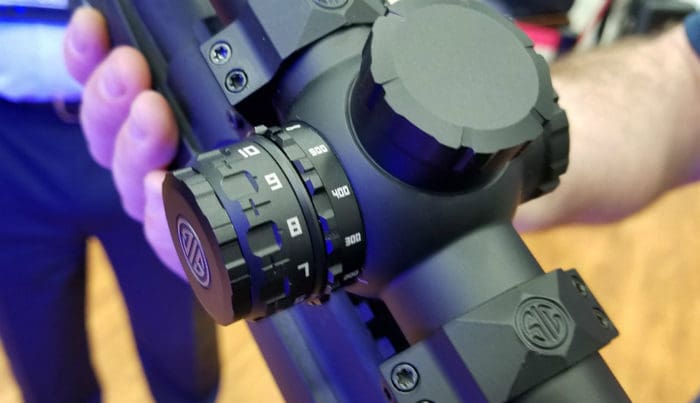
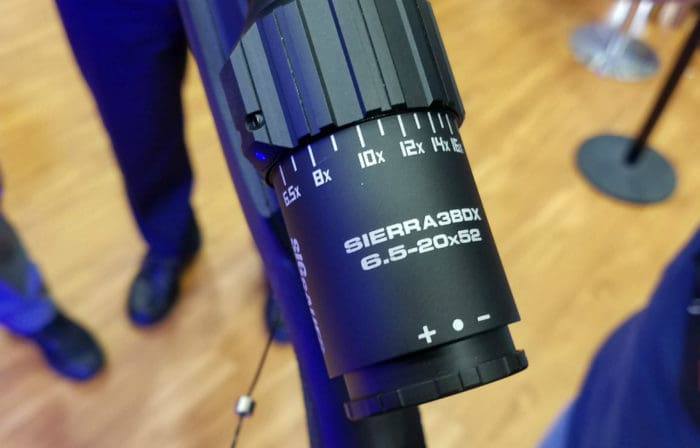
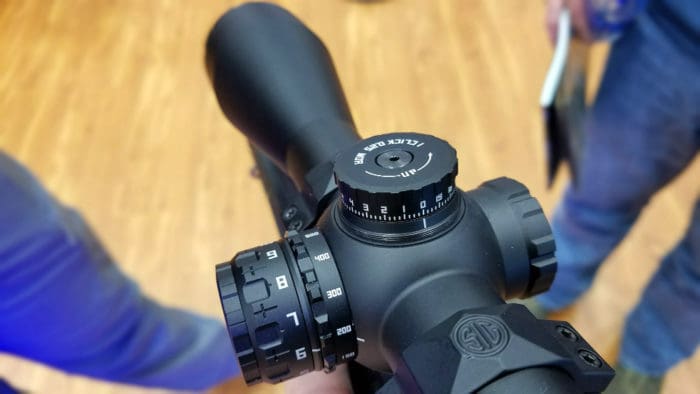
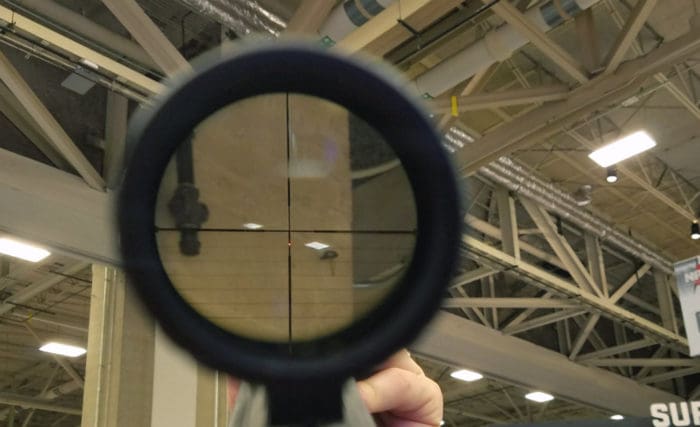

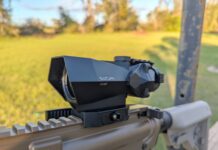


Now THAT is some cool use of modern tech!
I̟ j̟u̟s̟t̟ b̟e̟g̟a̟n̟ a̟ m̟o̟n̟t̟h̟ a̟n̟d̟ a̟ h̟a̟l̟f̟ b̟a̟c̟k̟ a̟n̟d̟ I̟’v̟e̟ g̟o̟t̟t̟e̟n̟ 2 c̟h̟e̟c̟k̟ f̟o̟r̟ a̟n̟ a̟g̟g̟r̟e̟g̟a̟t̟e̟ o̟f̟ $3,200…t̟h̟i̟s̟ i̟s̟ t̟h̟e̟ b̟e̟s̟t̟ c̟h̟o̟i̟c̟e̟ I̟ s̟e̟t̟ a̟s̟i̟d̟e̟ a̟ f̟e̟w̟ m̟i̟n̟u̟t̟e̟s̟! “M̟u̟c̟h̟ t̟h̟a̟n̟k̟s̟ t̟o̟ y̟o̟u̟ f̟o̟r̟ g̟i̟v̟i̟n̟g̟ m̟e̟ t̟h̟i̟s̟ r̟e̟m̟a̟r̟k̟a̟b̟l̟e̟ c̟h̟a̟n̟c̟e̟ t̟o̟ p̟r̟o̟f̟i̟t̟ f̟r̟o̟m̟ h̟o̟m̟e̟. T̟h̟i̟s̟ a̟d̟d̟i̟t̟i̟o̟n̟a̟l̟ m̟o̟n̟e̟y̟ h̟a̟s̟ c̟h̟a̟n̟g̟e̟d̟ m̟y̟ l̟i̟f̟e̟ i̟n̟ s̟u̟c̟h̟ a̟ v̟a̟r̟i̟e̟t̟y̟ o̟f̟ w̟a̟y̟s̟, e̟x̟p̟r̟e̟s̟s̟ g̟r̟a̟t̟i̟t̟u̟d̟e̟ t̟o̟w̟a̟r̟d̟ y̟o̟u̟!”
░A░M░A░Z░I░N░G░ ░J░O░B░S░
═══► marssmart.comᴵᴵᴵᴵᴵᴵᴵᴵᴵ
for it’s utility and what it does, that’s not a crazy price either. Nice
“It is extremely simple to use; range a target, put the digital ballistic holdover dot on target, pull the trigger, impact. Incredibly accurate and extremely simple, just connect the dot.”
And then miss. Because none of this fantastic tech can allow for the wind, and a shooter that cannot manually calculate bullet drop, certainly cannot allow for wind drift which is even more difficult.
But don’t worry, 16V said years ago that LIDAR would do wind calculations for us in a couple of years. I’m still waiting to hear just how many years a “couple” is…
I know of a lidar system that can easily measure wind speed, at the cost of $40,000. So there’s that 😉
In the near future, LIDAR will be down to a hundred bucks.
“Why experts believe cheaper, better lidar is right around the corner
Lidar used to cost $75,000. Experts expect this to fall to less than $100.”
https://arstechnica.com/cars/2018/01/driving-around-without-a-driver-lidar-technology-explained/
Will a powerful enough LIDAR focused to the target be able to detect wind velocity (via bouncing laser light off of airborne dust) in real-time and present that data to the shooter? (I’m aware that would be problematic in combat, hunting, not so much.)
Or will a directed Doppler radar be able to perform that function, reflecting off dust particles in the air?
Any way to detect what the mass of the air’s velocity is?
African or European?
Using LIDAR on a firearm is not a cost issue, its a mechanical problem. The lasers have to be in motion and in multiple locations in order gather the data. This means taking up a lot of space and a lot of power. Without some giant new tech breakthrough that is not in sight, it’s only practical for ground and vehicular applications.
This is what 16V failed to understand. That tech can only go so far. It’s not magic that will soon do whatever one desires. It doesn’t matter how small, powerful, or cheap the chips get, the lasers still need to be separated by a distance and in motion.
This doesn’t mean that a breakthrough won’t come, it means that we haven’t the slightest idea whether it will be next year, next century, or next millennium. But that will never keep a company like tracking point from trying to cash in, just because cool tech isn’t always useful. So long as someone is opening their wallet, someone else will always be glad to take their money.
Geoff PR: “will a directed Doppler radar be able to perform that function, reflecting off dust particles in the air”?
No use of the doppler effect can ever work on crosswinds because the doppler effect works through sensing the shifting of the length of certain waves as they move toward and away from a given location. If the motion is at a distance and moving directly perpendicular to the observer the doppler effect is almost zero. There would be no doppler shift to sense. As the motion gets more directly towards or away from the observer, the strength of the effect increases. OFC, that is exactly the opposite of what’s needed to sense wind drift. A head or tail wind(the best for doppler) can almost be ignored, but the more cross the wind(the worst for doppler) becomes the more important allowing for the drift becomes.
I have no idea about portable air mass sensors, but that’s the kind of thing that, if it isn’t here yet, it soon will be. Sensor tech is going in leaps and bounds, but only stuff that can be sensed directly. For example, the air mass could be easily sensed at the location of the shooter(but perhaps not portably enough… yet), but to sense the mass of the air 800 meters downrange is a different thing entirely.
Lidar is like tracer rounds, they work both ways, and increased accuracy is increased accuracy.
” Without some giant new tech breakthrough that is not in sight,…”
Ken, did you read the Ars article I referenced?
They think they’re on to something for that needed breakthrough, a combination of MEMS for the mirrors and other tricks. And it’s amazing how much the data resolution improves when they can go massive on additional channels. And computational horsepower is still advancing as they throw more and more CPU cores on the problem.
And you are 100 percent correct on Doppler, it’s for-aft only, when the lateral motion is more important.
Jeremy – Laden or un-laden? Assume husk grip-age, solve for Delta-V in meters per sec… 😉
“For example, the air mass could be easily sensed at the location of the shooter(but perhaps not portably enough… yet), but to sense the mass of the air 800 meters downrange is a different thing entirely.”
Existing tech *could* do that. But it would expose you in a tactical-combat situation. Like this –
The speed of light is constant. Shoot 2 quick flashes of light downrange, wait for the reflection from suspended dust that exists in all outdoor air, ignore the data that arrives before or after the range you want. Laser rangefinders do that function now quite well. *Image* the light that returns from the flashes and have a computer calculate the lateral drift by how much the dust specks move laterally.
Instant data on lateral wind velocity at any range. *Caution* People that are interested in killing you will find your flashes quite helpful in telling them where you are. (Come to think of it, there’s no reason why your ‘flasher’ can’t be a number of meters either side away from you.)
Game animals have no such ability. That could work for game hunting or long-range shooting applications…
(I declare copyright on the invention, May 6, 2018, 3:00 PM EST…)
Game animals
Geoff: I did indeed read the referenced item. OFC that was all for vehicular use, and so doesn’t include the limitations of space and power use that a man portable unit would require. Also barely mentioned was the additional problem of range. That item mentioned the goal that might be attained soon was data on objects from 180 to 300 meters away. But that wouldn’t help us to judge wind drift on a projectile, since wind doesn’t become a major shooting problem until past 300 meters. So the maximum range that they are aiming for in that item, is not yet even at the minimum needed for a long range shooter. So even assuming that they achieve that AND a cheap price, such system still wouldn’t be suitable for the shooter’s purposes. Plus, they are attempting to detect traffic and pedestrians and such, which are a great deal larger, and thus presumably easier to detect, then airborne particulate.
There are LIDAR systems in use to detect the wind for aligning wind turbine installations and setting blade pitch. They are very large and expensive, but even if those systems could be miniaturized and made cheap, they still only detect the airborne particulate data from one spot. They need manual calibration for the chosen range from the turbine, and it is short range, just tens of meters. That is fine for that purpose, but we require a great deal more data than that. We would need to know the wind speed and direction, not at merely one spot in front of us, but the overall average from many spots along the entire distance to the target. The more spots that are sampled on the way to the target, the greater the accuracy of such a system would be, similar to the sampling rate in digital to analog conversion in music.
So any such system would have to recalibate itself in real time, for many different spots along the way, gather the data, average those, and then feed the data to the scope in the form of hold off. All this would have to be done in real time, as if it took even, say ten seconds, the wind will probably shift by then, making the entire set of data useless. Only if it could do all of this in milliseconds, plus from one location, and without mechanical motion(because of power requirements and speed) would it be really useful. And then made cheap as well.
It is a pretty set of engineering problems, and none of the current systems seem to show much promise in that direction. IMHO, Obviously.
Oops. Make that: “similar to the sampling rate in analog to digital conversion in music”. D to A doesn’t make sense. The principle is; since the wind speed and direction is always changing between the shooter and the target, the more samples that are averaged along the way, the greater the accuracy will be, but 100 percent could never be achieved. Even if the wind was sampled every foot, there would still be some error.
In reality, perhaps every ten meters or so would be enough for very good accuracy. But that would be one hundred samples for a target at 1K meters. To do that in milliseconds is a real problem. OFC, that is the wish list, but even if it could just take three samples, one at the shooter, one at the target, and another half way between, it would be a big help. Average those three values and hope for the best. It might get close anyway, assuming the wind isn’t gusty and shifting(like it always is here in Montana). I am very familiar with shooting in the wind. No data sheet or ballistic knowledge helps. Its all guesswork until one can gain the ability to feel how much the wind might affect the bullet flight. One can add to this that in the field there are no flags along the path to target to help judge the wind. The tall prairie grass works sometimes, if it’s high enough. Watching the grasses move across a great distance, like 1K meters, really can show how the wind changes on the way.
It’ll work with a Kestrel or manual wind input into the app, and it does have LEDs to provide your wind hold in the reticle, too!
Rofl. Lemme just get my pencil and paper out so I can “manually” calculate ballistic drop with some in-field calculus.
You don’t calculate projectile drop at the time of the shot. You calculate it beforehand as you get used to your rifle. That is the time to create your data sheet. One can also buy them premade for a given caliber, or have your computer figure and print it out for your rifle. But those are not as accurate as one made by oneself at the range.
In any case, if one cannot make, or read, such a sheet on the range, the chances of doing it in the field are approximately zero. But the allure of having a machine to do it for us is so powerful that many gave tracking point tens of thousands of dollars, only to find that their magic rifle was not able to put a bullet on target in the left/right(also called yaw) axis like it could in the pitch axis.
Unless, OFC, one was lucky enough to always shoot on a completely calm day. I live in Montana and the odds of a day of no wind is almost zero. Here, the wind is usually a bigger factor than bullet drop, at any range.
I live in Montana too in the valley and you’re right. Wind is far more troublesome than just calculating basic drop
Aubrey:
Flathead Valley, or Yellowstone Valley? If Yellowstone, the Billings area gets almost as much wind as I do up in the NE corner, in the prairies. It’s not quite so bad in the Flathead. But all of Montana is full of gusty, swirling wind. Know why? Cause Idaho blows and North Dakota sucks 🙂
If you can hit here, you can hit anywhere.
Sorry, but that’s really outdated information you’re spreading.
Having a weather station/range finder that can take the hourly changes in pressure, humidity, angle of declination, and especially temperature into affect will absolutely give you more accurate DOPE.
At 800 yards a 10° change in temperature from the day you zeroed will cause can cause a difference of 12″ in drop depending on what powder and caliber you’re shooting.
Zeroing at a range days before you shoot will get you close, but modern technology has far surpassed those methods in terms of precision and speed.
I’m just west of Bozeman (which feels more and more like Missoula every day) But where i shoot out north of Three Forks is facing north and the wind up there can be brutal. A day where i’m fighting 25mph crosswinds is not uncommon in the slightest.
This is fantastic.
Darn you Jeremy. There goes my wallet.
Again.
So will this doodad plot anywhere in the FOV or just along the planes of the crosshairs?
Along the crosshairs, but that includes wind holds on the horizontal bar and a whole ton of vertical ones all the way down.
I was just about to get another scope for my Sako… now I’m thinking of holding off damnit!
Don’t, this is a gimmick. Get a quality scope, build DOPE and learn to read wind.
Im with you on knowing how to use a traditional scope. I already have a scope for my Sako. I was just looking at going from a Vortex to a Nightforce. It’s a bit frivolous for sure but this Sig system just sounds like something fun to dick around with on the range.
Ehh, red dot optics were once a “gimmick” as well.
This is a quality scope. It also works normally in the traditional, manual sense should your battery die or you just don’t choose to use the ballistic calculation stuff.
And this is different from the Burris Eliminator III how?
Oh, I get it, the Eliminator is big and expensive. Unlike a separate 4-16×50 (or 3-12×44) scope, a smart phone, and a rangefinder. Because three pieces to lose in amongst all the rest of your gear is a recipe for success, especially when you are in a time crunch.
Add up the weight and cost of a smart phone, rangefinder that will do 1K yards plus, and a 4-16×50 (or 3-12×44) scope, then compare with the $600-1400 Eliminator (sales, promotions etc drive the price).
I’m not saying the Eliminator is the greatest thing since sliced bread (it could be lighter and maybe a bit trimmer I suppose, but a 4-16×50 scope is generally large anyway), but it’s certainly convenient, and seems to do everything mentioned in this article, without taking your cheek off the stock.
Maybe I missed something.
I like that system but, yeah, it’s heavy and I’ve never been a fan of the rangefinder’s capabilities or speed. The Sig rangefinders are among the best on the market in all ways (distance capability, accuracy, speed, size, price), and their scopes are very nice, too. The internal level system is great. The BDX combos start at $699 MSRP. That’s scope + rangefinder. Which, by the way, means you now own a nice rangefinder that you can use on its own. Your phone is only required to input the ballistics info. Once that’s done the system will run with only rangefinder plus scope. And, of course, the scope can also be used normally without the system running.
I think we’ll see more all-in-one units like that Burris. But there’s some utility in having a standalone rangefinder, too.
Will it take manually input range?
Unless we’re talking really long range tactical, like beyond 1400 yards, where a dedicated piece of serious kit for rangefinding is necessary, the rangefinder belongs in the binoculars, period. (I don’t deal in that over 1400 realm, but I expect one big pair of binocs is coming for that, if not already available.)
The extra piece of gear is reason aplenty, but the bino rangefinder is obviously much quicker, when seconds count, and much better as well, because of the better view afforded. With the Sig kit you have four pieces, phone, rangefinder, binocs, scope. That’s a slick fail. Sig has made a great step forward but it is clearly only a first step. Put the bluetooth in the ranging binoculars. Most of us carry the phone anyway, so maybe the ballistics engine doesn’t have to go in the scope or binocs, but that ‘s one less bluetooth link to fail if it’s consolidated. Somebody will do it, GetRdone!
You don’t need the smartphone in the field. It’s only when you are inputting your ballistics and bonding the rangefinder and riflescope that it is needed. After that, you can leave your phone at home (or more likely your truck) and just go hunting withe the rangefinder and rifle.
Thanks, Lynn. I didn’t see that. Then possibly you could do the bonding (?) using computer as well, which is a tad more convenient for someone like me.
While possible, the current SIG BDX App is only compatible with iOS and Android. If you wanted you could technically emulate those platforms on a PC/desktop and install the app inside those virtual instances, but that’s not the easiest course of action. 🙂
Nice, another $599 ankle monitor that let’s Sig Sauer know exactly where, what, and how, you shoot.
Yup, my phone and my gunz don’t go out together. No GPS for me either, I use a compass.
The app is not required in the field. Once paired and your ballistics are synced into you rangefinder (which you can do at home), you can leave your connected device (smartphone) at home or in the truck.
I’ll stick with my shepherd scopes. Choose the circle that fits, squeeze trigger and done!
That’s pretty cool alright, now all we need is a bench rest that is motorized plugged into the other stuff and an auto trigger puller. Just set the rifle in the bench rest, turn on all the lectro’s,a and the gun aims and fires itself, all you have to do is load it and sit in the pickup drinkin beer and watch your gun shoot stuff. Sounds like fun to me.
That was my favorite scene in the Special Edition version of Aliens. 😉
https://youtu.be/HQDy-5IQvuU
Does he shoot the horse?
Comments are closed.